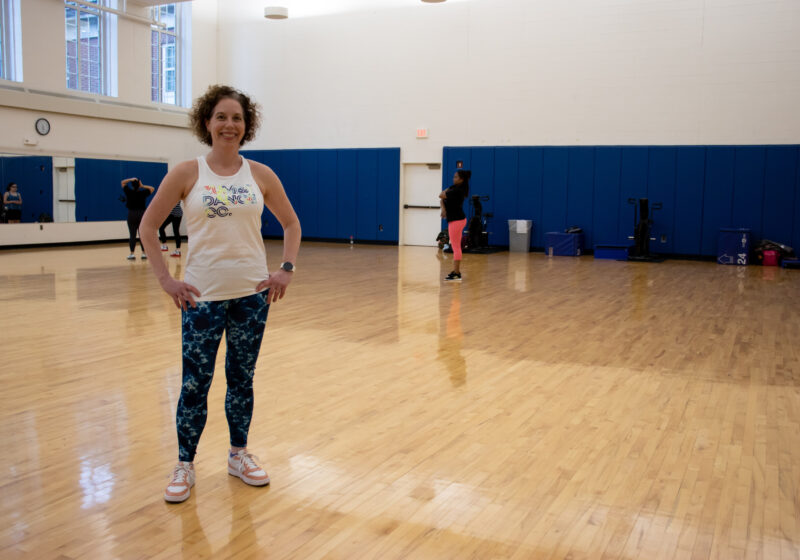Certain pianists of the 20th century are described with a reverence bordering on the religious. The electrifying performances of Vladimir Horowitz, the control of Alfred Brendel and even the eccentric musical personality of Glenn Gould are often thought of as representing the heights of pianistic artistry. Countless other giants exist as well, each possessing that intangible spark that separates a great artist from a lesser one.On March 29, Eastman School of Music piano professor Thomas Schumacher calmly walked onto the stage of Kilbourn Hall and proved once again that he belongs in the company of such masters. Dressed in a dapper black suit, Schumacher proceeded to navigate a difficult and varied program with elegance and ease.Beginning with Beethoven’s “Andante Favori,” Schumacher opened his program on a reflective note. Immediately evident was the attention to balance throughout the piece – the melody achieved a rare singing quality that was remarkable. Each gesture was meticulously thought out and executed with perfection. Next was Mozart’s Sonata in B-flat Major. The tone of the piano seemed to shimmer, and the clarity between parts was outstanding. The third movement, in particular, allowed Schumacher to display an exquisite delicacy of touch that allowed the flurry of fast scalar passages to be both graceful and elegant. The highlight of the concert, however, was Prokofiev’s Eighth Sonata. Schumacher addressed the audience at this point, providing important information about the genesis of the piece. He explained that the Eighth Sonata was the third of a series of “war sonatas” that Prokofiev began in 1939, that it evoked images of war without having that specific theme and that it took the composer five years to complete. As he spoke, it was evident that the artist was especially passionate about this work and he would occasionally walk to the piano to demonstrate themes, including the composer’s use of bell motifs within the fabric of the piece.This introduction was especially helpful in clarifying such a work that, while not so specifically atonal as would be found in Schoenberg, was far removed in style from the preceding works. As he began to play, a hush fell over the audience. Most notable about the first movement was Schumacher’s ability to clearly elucidate the various demarcations of the formal elements of the sonata’s first movement without compromising the dark and melancholic elements – elements that would often border on sounding anxious. The second movement, in contrast, was graceful and somewhat nostalgic. It seemed to represent a look backwards toward a better time. Most powerful of all, however, was the third movement, which often seemed to be a grotesque paraphrase of a march. It was quite unsettling. In his remarks, Schumacher compared this movement to an unstoppable war machine, which seems an apt description indeed.After intermission, two pieces by David Diamond were performed. These were lovely works, written over 40 years apart. The first piece, a tonal work titled “The Tomb of Melville,” was inspired by the great American writer. The second was a short barcarolle, a Venetian boat song. This piece was equally beautiful, yet written in a far more modern idiom, providing an interesting illustration of Diamond’s evolution of compositional language.Another highlight was Scriabin’s Sonata No. 6. Schumacher informed the audience that Scriabin himself was reputed to be afraid to perform the piece in public, as it evoked overpowering images of terror and malevolence. He also noted that for him, the music possessed a sensuous quality of sound and harmonic language that he found addictive. Schumacher also demonstrated select compositional aspects of the so-called “mystic chord,” upon which the piece is based, and subsequently proceeded to perform a powerful reading of a swirling, complex work that did indeed seem based in an inescapable nightmarish dream. As the final chord died, the audience seemed to take a deep breath before erupting into tumultuous applause, apparently thankful that Schumacher in no way suffers the same reservations about performance as the composer.Schumacher concluded the program with a beautiful performance of two pieces by Chopin, the Nocturne in B Major and the A-flat Waltz. The nocturne possessed a rare plaintive quality that was sublimely expressive, while the waltz provided a fitting contrast with a reading that was energetic, flirtatious and joyful. The combination of these final works had a profound effect on the audience, for the standing ovation began practically before the final note had sounded. The applause was thunderous and Schumacher was repeatedly called out. He performed two encores, a beautiful and hushed arrangement of Bach’s “Jesu Joy of Man’s Desiring,” and a humorous work by Howard Swanson, “The Cuckoo,” which evoked the sound of a cuckoo clock with added virtuosic runs at lightningfast tempos. Millard can be reached at jmillard@campustimes.org.
Dance
Zumba in medicine, the unexpected crossover
Each year at URMC, a new cohort of unsuspecting pediatrics residents get a crash course. “There are no mistakes in Zumba,” Gellin says.
Lacrosse
UR Womens’ Lacrosse trounces Nazareth 17-5
UR’s Womens’ Lacrosse team beat Nazareth University 17–5 on Tuesday at Fauver Stadium.


